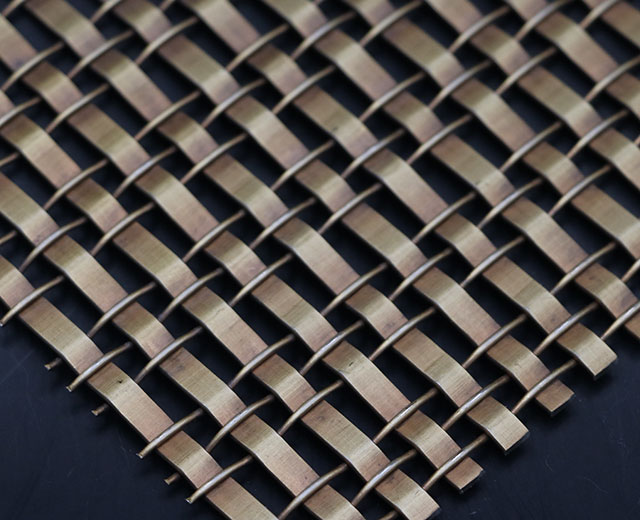How about the material of the metal decorative woven wire mesh? Still look at the surface treatment and craftsmanship!

polishing
Polishing includes mechanical polishing, chemical polishing, and electrochemical polishing.
Mechanical polishing of non-ferrous metals and their alloys is sometimes mechanically polished after grinding. In order to further reduce the roughness, enhance the gloss and appearance quality of the coarse coating. Mechanical polishing is performed on a polishing wheel coated with polishing blue. The effect and quality depend on the rigidity of the abrasive wheel and the circumferential speed of the wheel. Polishing blue is an abrasive composed of fine grains, made of various greases and auxiliary materials, and there are three types of white, red and green.
The main abrasive in white polished blue is a round shape, without sharp edges, calcium oxide fine powder, suitable for the polishing of soft metals such as nickel, aluminum, copper and their alloys, and the fine polishing of the surface of materials that require low roughness. .
The main abrasives in the red polished blue are iron oxide and feldspar fine powder with medium hardness, which are suitable for the polishing treatment of steel products.
The main abrasive in the green polishing blue is hard and sharp chromium oxide green fine powder, which is suitable for polishing chromium, stainless steel, hard alloy steel and other materials.
The chemical etching process performed under specific conditions for chemical polishing of the surface of metal products. Practice has proved that the dissolution rate of the micro protrusions on the metal surface in a specific solution is much higher than that of the micro depressions, and as a result, they are gradually leveled to obtain a smooth and bright surface. It is suitable for the surface polishing treatment of metal products such as steel, iron, copper, aluminum, nickel, zinc, Fu and its alloys.
The process of electrochemically polishing the surface of metal products for electrochemical etching. Under certain conditions, the dissolution rate of the microscopic protrusions on the surface of the metal product will gradually decrease, after which a mirror-like bright and smooth surface can be obtained. This method is often used as the main process of metal surface finishing.

Degreasing
Degreasing includes five methods: organic degreasing, chemical degreasing, low temperature degreasing, electrochemical degreasing, and ultrasonic degreasing.
The organic agent degreasing has the effect of saponification and non-saponification. The oil stains have a dissolving effect. Does not attack metals. But degreasing is not very thorough.
Chemical degreasing utilizes the saponification of saponified fats and oils by alkali solutions and the emulsification of non-saponifiable fats and oils by surface oily substances. Remove all kinds of oil stains on the surface of the workpiece.
Low-temperature degreasing is the use of surfactants to degreasing.
Electrochemical degreasing in the alkaline electrolyte, the metal workpiece is chemically affected by the direct current. The interfacial tension of the metal solution is reduced, and the solution is easy to wet and penetrate the surface of the workpiece under the oil film. At the same time, a large amount of hydrogen or oxygen ions are precipitated. The violent impact and tearing of the oil film causes the solution to produce a strong stirring effect. Strengthen the renewal of the oil film surface solution. As a result, the oil film is dispersed into countless fine oil beads that leave the surface of the workpiece and enter the solution to form an emulsion.
pre:The production process of metal mesh curtain
next:The green and environmental protection of metal woven draper
© 2025 Joinwin Architectural Wire. All Rights Reserved. | Sitemap
Recommended Read
Decorative ceilings – a new choice to enhance the beauty and function of the space
Architectural Wire Mesh: Transform Spaces with Modern Metal Aesthetics